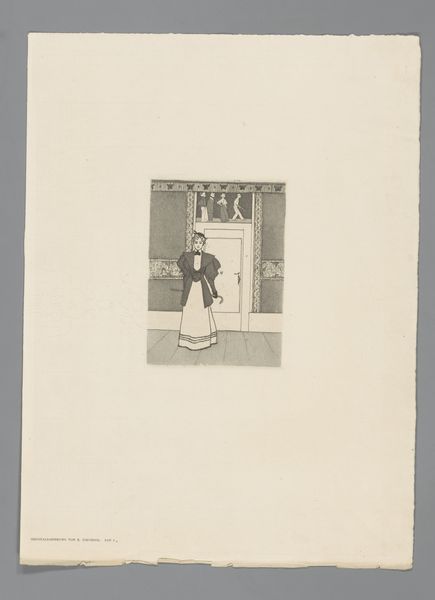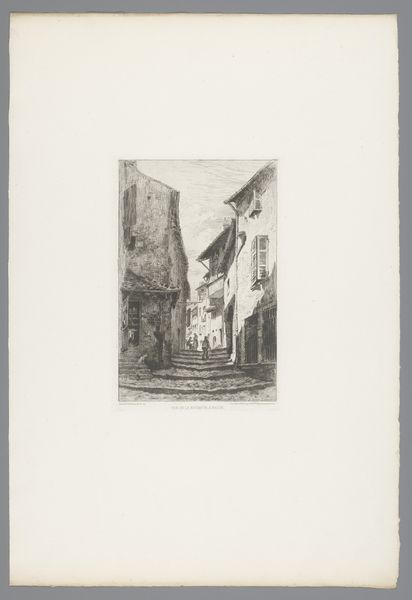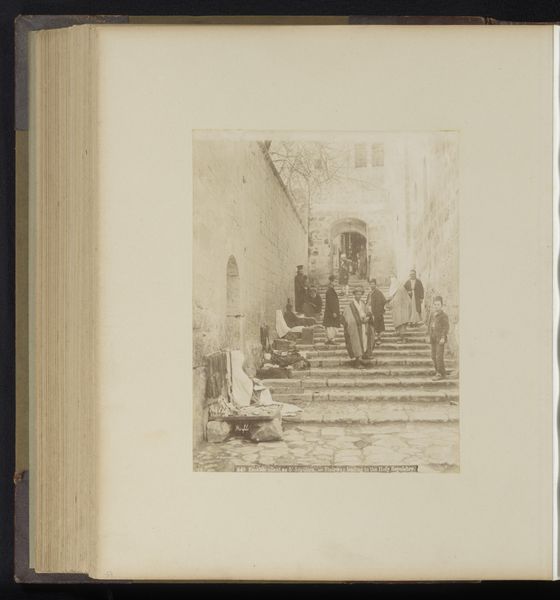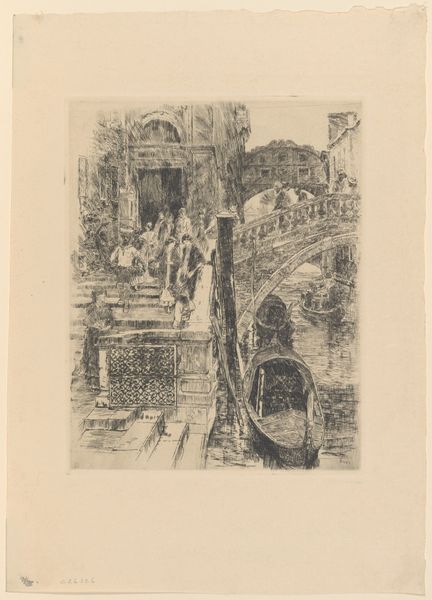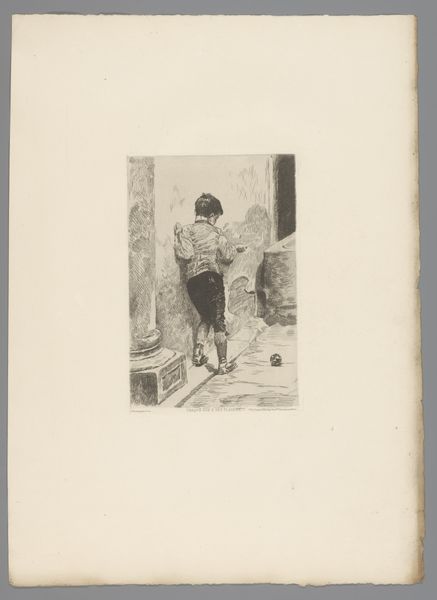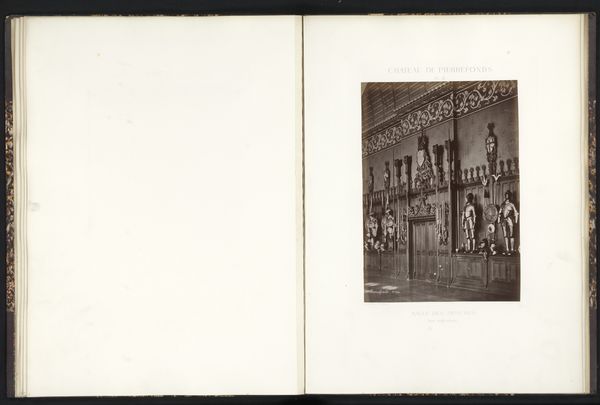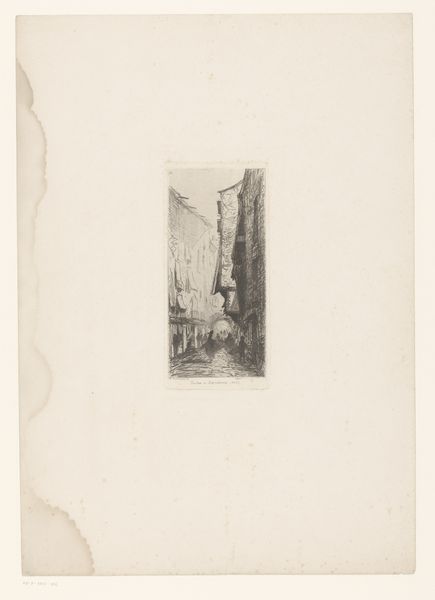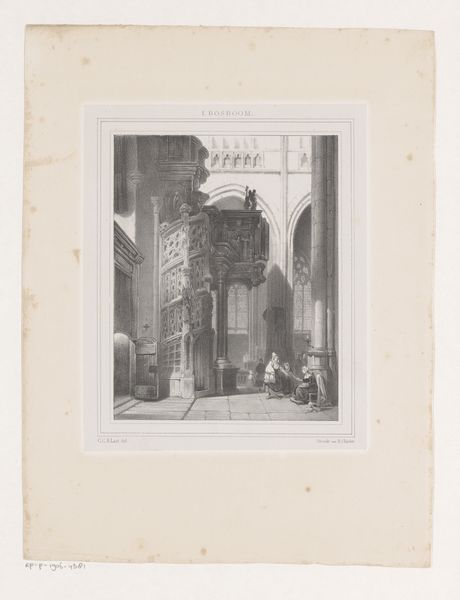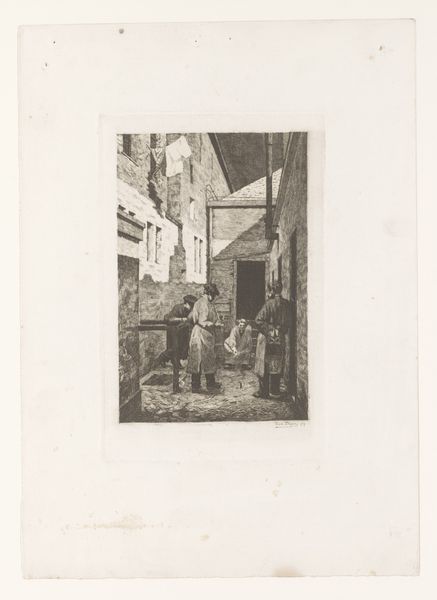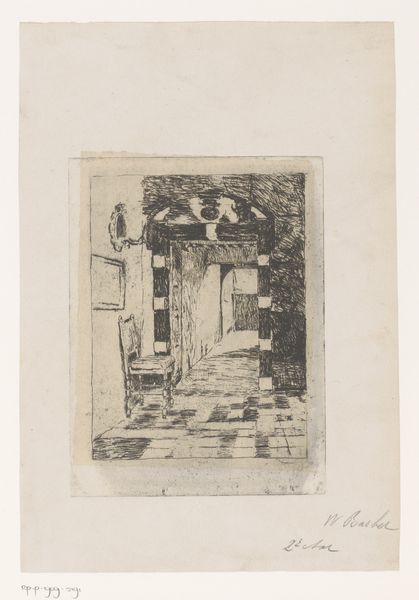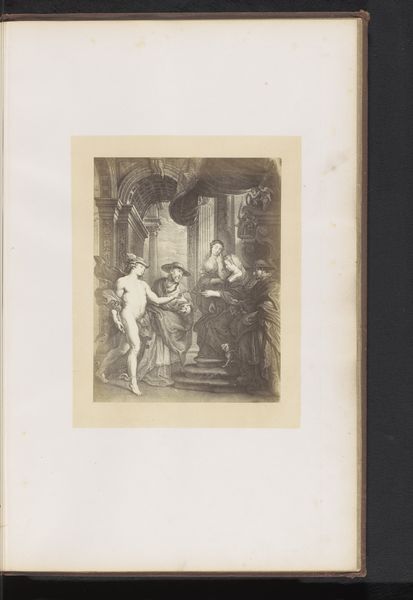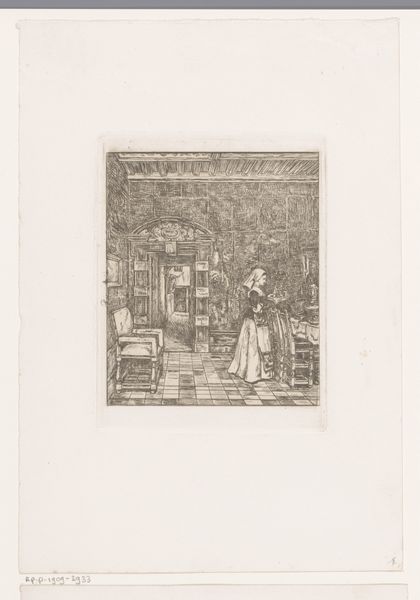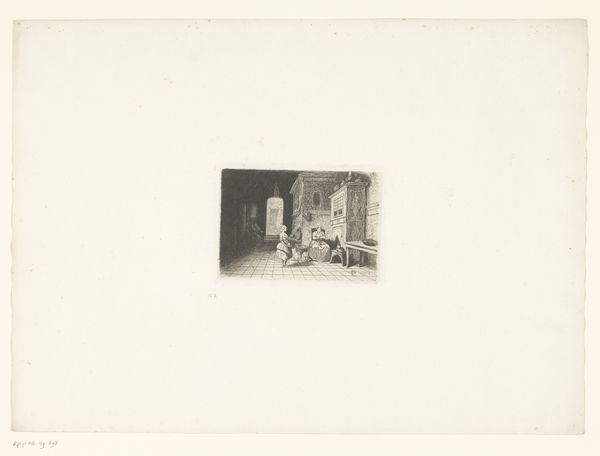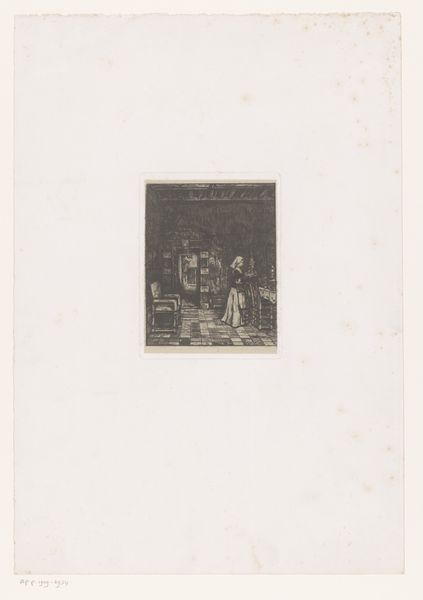
print, etching
#
portrait
# print
#
impressionism
#
etching
#
genre-painting
#
history-painting
#
academic-art
#
realism
Dimensions: height 279 mm, width 193 mm
Copyright: Rijks Museum: Open Domain
Editor: This is Henri Gervex's "Eerste heilige communie in een kerk," or "First Holy Communion in a Church," an etching from 1878. It has a strong documentary feel to it, and seems to capture a particular moment. What can you tell me about this work? Curator: Looking at this etching, I am drawn to the labor involved in its creation, the technical skill evident in translating a scene into a reproducible format. How might the democratization of images through printmaking influence social rituals and class dynamics? Editor: That’s a very different lens than I was using. Are you suggesting this isn't just about the event itself, but about who could access its image and what that meant? Curator: Precisely. Consider the materiality of the print itself. Etching allowed for relatively mass production. Who was the target audience for these prints? How did they consume this image? And how does that consumption reinforce or challenge existing social structures related to religious events and status? Editor: So you see the value not just in what’s depicted, but in the entire circuit of production and consumption. What about Gervex’s choices in technique? How does that fit into your materialist perspective? Curator: Gervex chose etching, a medium suited to detail and replication. The act of replication allowed access beyond the physical church walls. It brings a private, almost performative ritual of Catholicism to a public space of the print market. Consider the socioeconomic background of the figures depicted versus the background of the print-purchasers. Editor: It’s like he's mass-producing a certain vision of faith. The lines in the etching become almost like threads connecting different social groups to that image and its embedded values. I hadn't considered that angle. Curator: The power of art, and especially reproducible art, lies not just in its aesthetic value, but in the web of social relations and economic forces it embodies. Hopefully this opens up a path to appreciate other works of art from a fresh perspective.
Comments
No comments
Be the first to comment and join the conversation on the ultimate creative platform.
